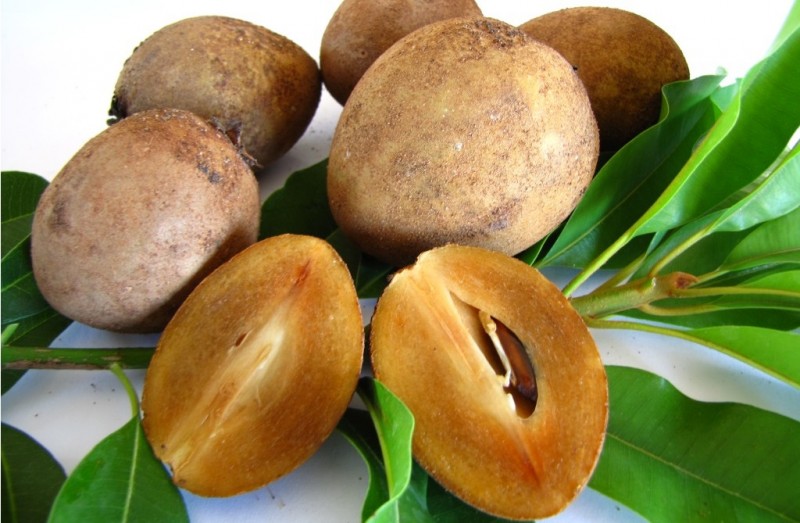
Sapodilla, also known as "chikoo," is a delectable tropical fruit that's loved for its sweet flavor, creamy texture, and numerous health benefits. This article takes you on a journey through the world of sapodilla, exploring its origins, nutritional value, culinary uses, and more.
Sapodilla, scientifically known as Manilkara zapota, is a tropical fruit native to Central America. It has made its way to various parts of the world, becoming a beloved delicacy for its unique flavor profile and versatile uses.
The Origin and Distribution
Sapodilla trees thrive in warm climates and are native to the Yucatan Peninsula in Mexico. Over time, they spread to other tropical regions, including parts of Asia, the Caribbean, and South America. Today, sapodilla is cultivated in numerous countries, with India being one of the leading producers.
Physical Characteristics
The fruit is typically round or oval, with rough, sandpaper-like skin that turns brown when ripe. The inner flesh is a pale yellow to brown color, boasting a granular texture similar to pears. Its distinct sweetness is often compared to a mix of brown sugar and pears.
Nutritional Powerhouse
Sapodilla might be delicious, but it's also packed with essential nutrients. It's a good source of dietary fiber, vitamins (such as vitamin C and vitamin A), and minerals (including potassium, copper, and iron). This nutrient-rich fruit contributes to a balanced diet and overall well-being.
Health Benefits
Consuming sapodilla offers an array of health benefits. Its fiber content aids digestion and helps prevent constipation. The presence of antioxidants, like vitamin C, supports the immune system and fights against free radicals. Additionally, the fruit's natural sugars provide a quick energy boost.
Culinary Uses
Sapodilla's versatility shines in the culinary world. It can be enjoyed fresh, added to fruit salads, or blended into smoothies for a delightful treat. The fruit's sweet flavor also makes it an excellent ingredient in desserts, jams, and chutneys.
How to Select and Store
When selecting sapodilla, look for fruits that yield slightly to gentle pressure, indicating ripeness. Store them at room temperature until fully ripe, after which they can be refrigerated for a few days. To enjoy the best flavor and texture, allow refrigerated sapodilla to come to room temperature before eating.
Growing Your Own Sapodilla Tree
For those with a green thumb, cultivating a sapodilla tree can be a rewarding endeavor. Choose a sunny location with well-draining soil and provide regular water. Patience is key, as it may take a few years for the tree to bear fruit.
Popular Varieties
Several sapodilla varieties exist, each with its own unique flavor and characteristics. Some of the popular varieties include Alano, Prolific, Hasya, and Morena.
Sapodilla in Traditional Medicine
Beyond its culinary uses, sapodilla has a history of being used in traditional medicine. It's believed to have properties that aid in treating coughs, diarrhea, and even skin conditions. However, it's important to consult with a medical professional before using it for medicinal purposes.
Fun Facts About Sapodilla
Sapodilla vs. Other Fruits: A Nutritional Comparison
When compared to other tropical fruits like mangoes and bananas, sapodilla holds its own in terms of nutritional value. Its unique blend of vitamins, minerals, and dietary fiber makes it a standout choice for a well-rounded diet.
Sustainability and Environmental Impact
Sapodilla trees are known for their ability to thrive in diverse ecosystems. However, like many crops, they can be impacted by climate change and habitat loss. Supporting sustainable agricultural practices can help ensure the longevity of sapodilla cultivation.
Sapodilla Recipes: From Sweet to Savory
In conclusion, sapodilla is more than just a tropical fruit; it's a sweet and nutritious delight that offers a host of health benefits and culinary possibilities. Its rich history, unique flavor, and versatility make it a cherished ingredient in various cultures around the world.
5 Home Remedies for Rapid Weight Loss
5 Ayurvedic Practices to Keep You Healthy and Energetic This Summer
Highway 7: Exploring the Scenic Route through History and Beauty